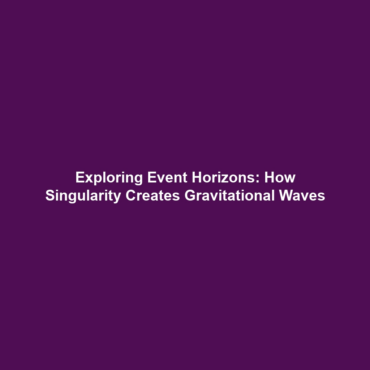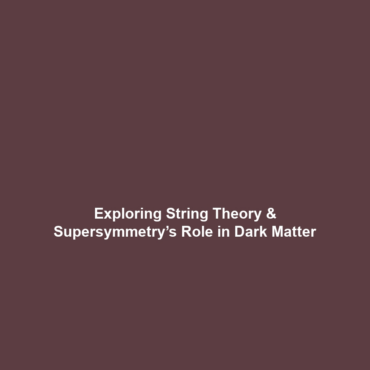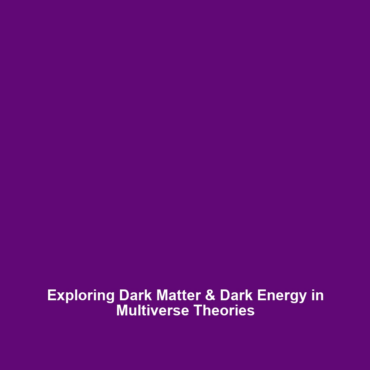The Role of Event Horizons and Singularities in Producing Gravitational Waves
Understanding the intricate relationship between event horizons, singularities, and gravitational waves is pivotal in modern astrophysics. Gravitational waves, ripples in the fabric of spacetime caused by massive celestial events, often arise from dramatic occurrences such as black hole mergers and neutron star collisions. This article delves into the significant role that event horizons and singularities play in the production of these waves, shedding light on their importance within the broader context of gravitational physics.
Key Concepts
To grasp the role of event horizons and singularities in the generation of gravitational waves, it is essential to understand some key concepts:
1. Event Horizons
An event horizon represents the boundary surrounding a black hole beyond which no light or information can escape. As mass collapses into a black hole, severe gravitational effects are manifested, leading to the generation of gravitational waves detectable from Earth.
2. Singularities
A singularity is a point in spacetime where gravitational forces compress matter to an infinite density, leading to spacetime curvature that is undefined. Singularities are theorized to be the core of black holes and play a vital role in the gravitational interactions necessary for wave production.
3. Gravitational Waves
Gravitational waves are oscillations in spacetime produced by accelerating masses, particularly in extreme gravitational fields surrounding event horizons and singularities. Detecting these waves provides insight into the dynamics of the universe and the fundamental nature of gravity.
Applications and Real-World Uses
The understanding of how event horizons and singularities contribute to producing gravitational waves has significant applications in various fields:
- Astrophysics Research: By studying gravitational waves, astrophysicists can probe cosmic events, such as black hole mergers, enhancing our understanding of the universe.
- Testing General Relativity: The detection and analysis of gravitational waves test predictions made by Einstein’s theory of general relativity, pushing the boundaries of theoretical physics.
- Technological Advancements: Innovations in detectors such as LIGO (Laser Interferometer Gravitational-Wave Observatory) exemplify practical applications in monitoring cosmic events tied to event horizons.
Current Challenges
Despite the advancements in studying gravitational waves, several challenges persist:
- Detection Sensitivity: Existing equipment has limitations in sensitivity, which restricts the observation of weaker gravitational wave events.
- Understanding Complex Interactions: The interactions between multiple bodies in extreme gravitational fields pose complexities that remain inadequately understood.
- Noise Interference: Environmental noise can significantly interfere with detector readings, complicating the accurate identification of gravitational waves.
Future Research and Innovations
Future innovations promise to enhance our understanding of the gravitational wave landscape:
- Advanced Detectors: The next generation of gravitational wave observatories, such as the Einstein Telescope and Cosmic Explorer, aims to improve sensitivity and detection capabilities.
- Astrophysical Simulations: Enhanced computational power will allow for more robust simulations of wave generation near event horizons and singularities.
- Interdisciplinary Collaboration: Partnerships between physicists, astronomers, and engineers will foster breakthroughs in understanding gravitational phenomena.
Conclusion
The intricate role of event horizons and singularities in producing gravitational waves illustrates the dynamic nature of our universe. As researchers continue to explore these cosmic phenomena, the implications for science and technology are profound. To stay updated on the latest developments in gravitational wave astronomy and related articles, consider subscribing to relevant scientific journals or following updates from leading astrophysics institutions.






